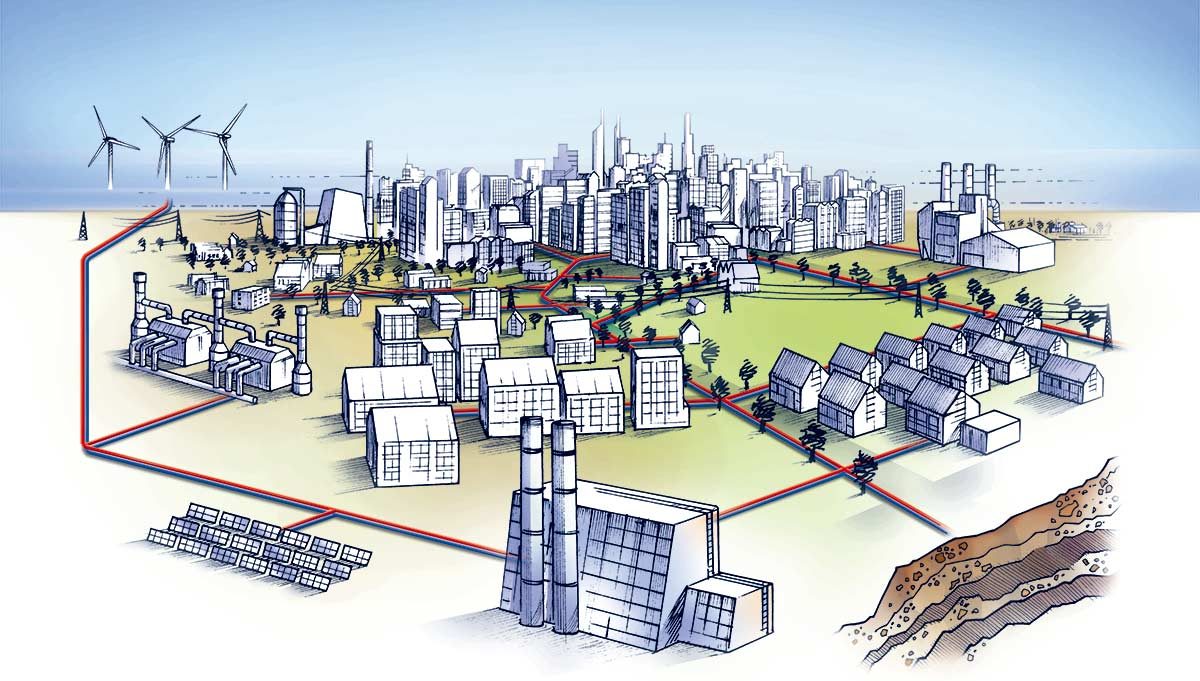SUUHAS TENDDULKAR
The large urban sprawls in India’s biggest cities today clearly epitomise the lack of foresight and prudence in city design and management. Even as high rises and big roads have characterised progress in these cities, haphazard planning permits and unregulated construction have also significantly reduced the liveability of the cities. There is a clear need to question the business as usual approach to city planning and urban architecture.
The earliest of urbanities in England and the US, close to coal/oil/gas fields and processing industries, were small settlements that grew over time into large cities. The gradual uprooting of the population from its more traditional surrounding in the country to the routine and congested city life brought about a plethora of cultural and psychological problems and in addition also highlighted the necessity of planning for large scale resources and resource management functions like water supply, sanitation, drainage and electricity. As the cities grew in size, disconnect between the cities and the resources (water, food, nature) became even wider making the cities ever more reliant on the countryside for its resource needs.
In the continental US, the approach to address the problems of growing urbanisation were expectedly more market oriented. After the First World War, urban planning in the USA increasingly took a modernist spin. The modernist movement championed, most notably by Le Corbusier, looked at the problems from a technical perspective and advocated high rise building, homogeneous superblocks for cheap housing; essentially dense urban settlements interspersed with open spaces. The time after the Second World War, which was characterised by high population growth, a growing economy, saw single families and wealthy residents move outside the city into new suburbs creating the urban sprawl. Vast landscapes were covered with suburbs that were far from jobs and public transit, and residents used cars to commute to places of employment, commerce, and recreation.
Continental Europe also increasingly adopted modernist approach to city planning by constructing dense urbanities with high rises and mass housings. Suburban development also significantly changed the landscape around the established cities. The explosion in car ownership after the Second World War also de-emphasised the need for public transport planning for the cities. The old cities became commercial and industrial areas with the suburbs increasingly hosted residents and retail businesses. This lopsided and space consuming sprawl created myriad challenges including environmental degradation and consequent health impacts on citizens, deterioration in resource quality, extreme poverty and inequity because of imbalanced economic activity, and social dissolution.
These problems of urban settlements and sprawls helped spawn alternative views and theories for urban development, notably the sustainable city or the eco-city movement. Although the term sustainability is relatively new, the concept itself is quite old. One of the earliest attempts at urban planning that aimed to bridge this gap was the work ‘Garden Cities of To-morrow’ by Ebenezer Howard in the UK. The concept of Garden Cities aimed to reconcile industrial urbanisation with rural settlements by allowing Britain’s growing worker class, increasingly trapped in poverty in the unsanitary and overcrowded slums of industrial centres, an alternative that balanced the social and economic benefits of cities with the healthful effects of living in the countryside. The concept called for a radial development model under which each city resident could claim proximity to self-sufficient industries, community services and agriculture emphasising on walkability within the cities and public transport for outside city commute. Another notable stalwart who advocated the Garden City concept and called attention to integrated planning model for cities was Lewis Mumford. As the spokesman for the Regional Planning Association of America, an informal group of architects, planners, economists and writers, he advocated for the establishment of regional cities with requisite residential, cultural, commercial and industrial components and surrounded by an agricultural area, also acting as the geographical limit, for servicing the city’s needs.
Although these thoughts did not find support during their times, the ideas of city planning from these two intellectuals gained increasing prominence after revival of environmental movement in the Europe and the US in the 1980s. The current approach to urban sustainability also takes cues from their work on integrated planning for urban development. The modern concept of sustainable and smart city has evolved and it not only covers aspects related to architectural planning, land use segregation, zoning laws but also subsumes diverse areas like green buildings, energy conservation, energy efficiency, renewable energy generation, waste recycling, water recycling and capture, home/community gardening, smart devices and innovative transport models.
The next in the series of these articles will cover the concept of sustainable city and some successful initiatives in the sustainable city movement.



























